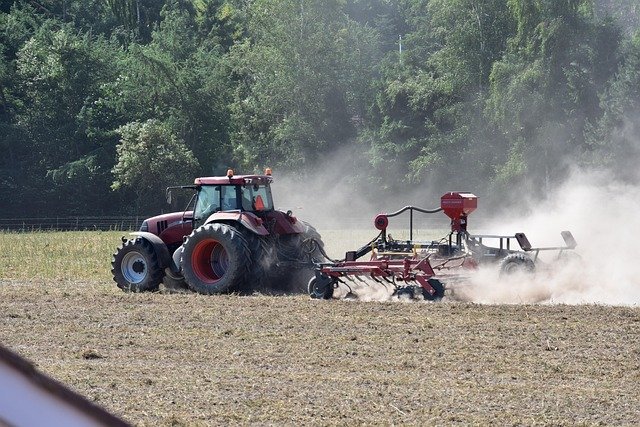Discover the Best Farming Tractors of 2025: Models, Features & Pricing Breakdown
Discover the best farming tractors of 2025, from compact models ideal for small farms to high-performance machines for larger operations. This guide covers essential features, performance, and pricing to help you choose the perfect tractor based on your needs and farm size, ensuring maximum efficiency.

Farming Tractors 2025: Models, Features & Pricing Guide
The agricultural machinery landscape continues to evolve rapidly, with manufacturers introducing innovative technologies and enhanced capabilities across their tractor lineups. Today’s farming operations require equipment that balances power, efficiency, and technological advancement while remaining cost-effective for various farm sizes and applications.
Overview of Farming Tractors Available in 2025
The 2025 tractor market features significant advancements in engine efficiency, hydraulic systems, and precision agriculture integration. Major manufacturers have focused on developing machines that offer improved fuel economy, reduced emissions, and enhanced operator comfort. Modern tractors now incorporate GPS guidance systems, automated steering, and advanced monitoring capabilities that help optimize field operations and reduce operator fatigue.
Engine technology has seen substantial improvements, with many models featuring turbocharged diesel engines that deliver more power while consuming less fuel. Transmission systems have also evolved, with continuously variable transmissions (CVT) becoming more common across different horsepower ranges, providing smoother operation and better fuel efficiency.
Small Farm Tractors: Compact Solutions for Diverse Operations
Small farm tractors, typically ranging from 25 to 75 horsepower, serve as versatile workhorses for hobby farms, specialty crop operations, and property maintenance tasks. These compact machines excel in applications such as mowing, light tillage, loader work, and implement operation in confined spaces.
Modern small tractors feature hydrostatic transmissions that eliminate clutching and shifting, making them ideal for operators of varying experience levels. Many models include four-wheel drive capability, which provides enhanced traction and stability on uneven terrain. Loader compatibility remains a crucial feature, with most manufacturers designing their compact tractors to accommodate front-end loaders for material handling tasks.
Safety features have become standard across the small tractor segment, including rollover protective structures (ROPS), seat belts, and improved visibility designs. Comfort enhancements such as ergonomic seating, intuitive control layouts, and reduced noise levels contribute to operator satisfaction and productivity.
Models, Features and Pricing Considerations
Tractor selection involves evaluating numerous factors including horsepower requirements, implement compatibility, hydraulic capacity, and available options. Mid-range tractors (75-150 horsepower) offer excellent versatility for mixed farming operations, providing sufficient power for field cultivation while remaining manageable for livestock and maintenance tasks.
Hydraulic systems have become increasingly sophisticated, with many tractors featuring multiple remote valves, high-flow hydraulic options, and electronic joystick controls. These enhancements enable operation of advanced implements such as precision planters, sophisticated tillage tools, and high-capacity harvesting equipment.
Technology integration varies significantly across models and price points. Entry-level tractors may include basic digital displays and GPS readiness, while premium models feature comprehensive precision agriculture suites with variable rate application capabilities, field mapping, and connectivity to farm management software systems.
| Tractor Category | Horsepower Range | Typical Price Range | Key Features |
|---|---|---|---|
| Compact Utility | 25-50 HP | $25,000-$45,000 | Hydrostatic transmission, loader ready, ROPS |
| Small Farm | 50-75 HP | $40,000-$65,000 | 4WD available, PTO options, basic hydraulics |
| Mid-Range | 75-150 HP | $80,000-$150,000 | CVT transmission, advanced hydraulics, GPS ready |
| Large Farm | 150-300 HP | $200,000-$400,000 | Precision agriculture, high-flow hydraulics, cab suspension |
| High-Horsepower | 300+ HP | $400,000-$600,000+ | Advanced automation, track options, comprehensive technology |
Prices, rates, or cost estimates mentioned in this article are based on the latest available information but may change over time. Independent research is advised before making financial decisions.
Choosing the Right Tractor: Factors to Consider for Different Farm Sizes
Farm size significantly influences tractor selection, but acreage alone doesn’t determine the ideal machine. Crop types, field conditions, implement requirements, and operational priorities all play crucial roles in the decision-making process. Small diversified farms may benefit from compact tractors with multiple attachment options, while large grain operations typically require high-horsepower machines with advanced precision agriculture capabilities.
Operational efficiency considerations include fuel consumption, maintenance requirements, and operator comfort during extended use periods. Modern tractors offer various cab configurations, from basic ROPS structures to fully enclosed, climate-controlled environments with advanced seating and visibility features.
Financing options and total cost of ownership calculations should factor into the selection process. Many manufacturers offer competitive financing programs, extended warranties, and maintenance packages that can significantly impact long-term ownership costs. Resale value considerations also influence the overall investment equation, with certain brands and models maintaining stronger market values over time.
The tractor market in 2025 provides exceptional options across all farm sizes and applications. Careful evaluation of specific needs, available features, and total ownership costs ensures farmers select equipment that enhances productivity while delivering long-term value. As technology continues advancing, modern tractors offer unprecedented capabilities that can transform farming operations and improve overall efficiency.




